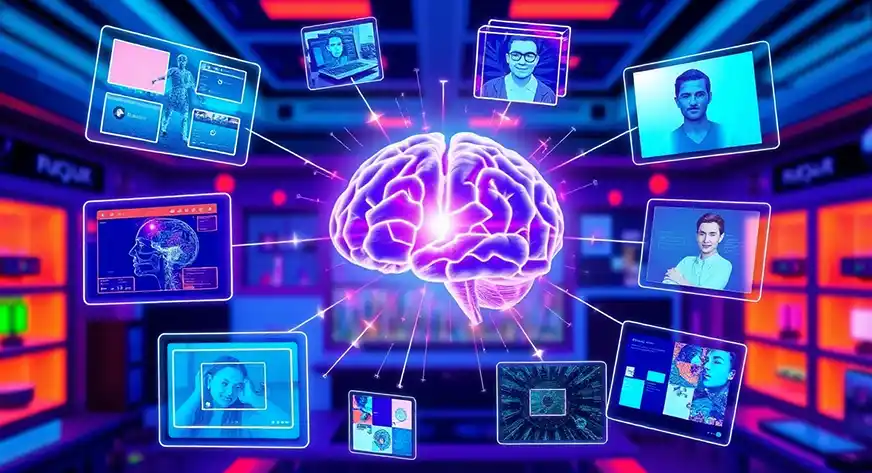Computer vision, a dynamic field blending artificial intelligence and image processing, is reshaping industries like healthcare, automotive, and entertainment. With advancements such as OpenAI’s GPT-4 Vision and Meta’s Segment Anything Model (SAM), computer vision has become more accessible and powerful than ever. By 2025, the global computer vision market is projected to surpass <a target="_blank" href="https://www.marketsandmarkets.com/Market-Reports/ai-in-computer-vision-market-141658064.html” target=”_blank” rel=”noreferrer noopener nofollow”>$41 billion, fueled by innovations in autonomous vehicles, AR/VR, ai-powered diagnostics, and beyond. This is an exciting era to build a career in this transformative domain. If you’re just starting your computer vision journey, what better way to learn than by solving real-world projects? This article introduces 30 beginner-friendly computer vision projects to help you master essential skills and stay ahead in this rapidly evolving field.

If you are completely new to computer vision and deep learning and prefer learning in video form, check this out: Computer Vision using Deep Learning 2.0.
Computer Vision Projects Learning Curve
To make it easier for you to navigate, I’ve divided the article into three segments – beginner, intermediate, and advanced. Based on your current knowledge and experience in the field, pick projects that align best with your skill level and learning goals.
| Level | Details | Key Focus |
|---|---|---|
| Beginner | Small datasets and straightforward techniques; accessible through open-source tutorials and pre-labeled datasets | Learning basic image processing, classification, and detection |
| Intermediate | Moderate datasets and more complex tasks; great practice for feature engineering and advanced frameworks like TensorFlow or PyTorch | Deeper knowledge of neural networks, multi-object tracking, segmentation, etc. |
| Advanced | Large, high-dimensional datasets and advanced deep learning or GAN techniques; perfect for getting creative with problem-solving and model improvements | Generative models, advanced segmentation, and specialized architectures |
Beginner-Level Computer Vision Projects
1. Face Recognition
Identify or verify individuals based on facial features. A step up from face detection, you’ll learn about face embeddings, alignment, and verification. This is widely used in security systems.
2. Object Detection
Identify and localize multiple objects within an image. Unlike classification, detection also demands bounding boxes around objects. This is fundamental in autonomous vehicles and robotics.
3. Face Mask Detection
Detect whether people in an image or video feed are wearing face masks. This became popular during the COVID-19 pandemic. You’ll work with a labelled dataset of faces—some wearing masks, others not.
4. Traffic Sign Recognition
Identify different types of traffic signs from images or real-time video. Commonly used in self-driving car research. A CNN can classify them using datasets like GTSRB. The German Traffic Sign Recognition Benchmark (GTSRB) is a popular dataset. Preprocessing includes resizing images and normalizing pixel values.
5. Plant Disease Detection
Detect diseases in plants based on leaf images. Similar to general image classification tasks, but focused on spotting features of diseases like leaf spots or colour changes. Highly beneficial for agriculture.
6. Optical Character Recognition (OCR) for Handwritten Text
Convert handwritten text in images to digital text. Classic OCR systems struggle with sloppy handwriting, but neural networks can do better. Techniques involve segmentation of individual characters and sequence learning.
7. Facial Emotion Recognition
Classify images based on facial expressions—like happiness, sadness, or anger. Train a classifier to detect subtle changes in facial features. Common in social robots, advertising, and user feedback analysis.
8. Honey Bee Detection
Detect honey bees in images or videos for tracking hive health and population. A great exercise in small object detection in possibly cluttered backgrounds.
9. Clothing Classifier
Classify different types of clothing items (e.g., T-shirt, pants, dress). A classic beginner dataset to practice CNN architecture. Fashion MNIST is more challenging than MNIST digits due to subtle distinctions.
10. Food and Vegetable Image Classification
Categorize different types of food in images. Great for restaurant menu apps or calorie tracking. Learn to spot colour, texture, and shape differences.
11. Sign Language Detection
Classify hand gestures corresponding to letters or words in sign language. A stepping stone for building sign language interpreters. Focus on shape and orientation in static images or videos.
12. Edge & Contour Detection
Detect edges or contours in images, used for highlighting object boundaries. Can be done with simple filters like the Canny edge detector or a small CNN.
13. Colour Detection & Invisibility Cloak
Detect a specific colour in a video feed and make that region “invisible.” A fun project to learn colour segmentation in video frames. Transform the colour region with a background image for an invisibility effect.
14. Multi-object Tracking in Video
Continuously track multiple objects across video frames. Involves object detection for each frame plus an algorithm that assigns unique IDs and tracks them over time. Popular for surveillance and sports analytics.
15. Image Captioning
Generate descriptive text captions for a given image. Combines Computer Vision and NLP. Extract features from images using a CNN, then feed them into an RNN or Transformer that generates text.
16. 3D Object Reconstruction
Create a 3D model of an object from multiple 2D images taken at different angles. Used in robotics, augmented reality, and gaming. Techniques like Structure-from-Motion (SfM) and multi-view stereo can help reconstruct objects in 3D.
- tech Stack: Python, OpenCV, Structure-from-Motion, Multi-view Stereo
- Start: Get Data | Tutorial: Get Here
17. Gesture Recognition for Human-Computer Interaction
Recognize specific human hand or body gestures to control a device or application. Build systems that let you control your computer or IoT devices without touching anything. Great for accessibility solutions.
18. Car Number Plate Recognition
Detect and read vehicle license plates. Similar to OCR, you first need to detect the plate’s location in the image, and then recognize the characters. Widely used in parking and toll systems.
19. Hand Gesture Recognition
Classify different hand gestures (e.g., Rock-Paper-Scissors, number signs). Focus on generic gestures for applications in gaming, robotics, and VR.
20. Road Lane Detection in Autonomous Vehicles
Identify lane boundaries and guide a self-driving car or driver-assistance system. Analyze frames from a dashcam to detect lines or curves that represent lanes.
- tech Stack: Python, OpenCV, Hough Transform, TensorFlow
21. Pathology Classification
Identify diseases or cell anomalies in medical images (e.g., x-rays, MRIs, or microscopy slides). Important in healthcare, requiring high accuracy and reliability.
22. Semantic Segmentation
Classify each pixel in an image into categories (e.g., road, car, person). More granular than object detection. Helps in scene understanding for self-driving cars, medical imaging, or photo editing.
23. Scene Text Detection
Locate and extract text from real-world images (e.g., street signs, storefronts). Different from simple OCR because the text can appear in various fonts, orientations, and backgrounds.
Advanced-Level Computer Vision Projects
24. Image Deblurring Using Generative Adversarial Networks
Remove motion blur or focus blur from images to improve clarity. Traditional deblurring filters might not work well on large blurs or complex patterns. GAN-based approaches learn to generate sharper images.
25. Video Summarization
Automatically generate short summaries or keyframes from lengthy videos. Detect scene changes or important frames by analyzing motion, object activity, or performing storyline segmentation.
26. Face De-Aging/Aging
Predict how a face might look after ageing or reverse-age an older face to its younger version. A specialized image-to-image translation problem with applications in entertainment and research.
27. Human Pose Estimation and Action Recognition in Crowded Scenes
Detect key joints in humans and classify their actions, even in dense or cluttered scenarios. Builds on multi-person pose estimation methods like OpenPose or HRNet.
28. Unsupervised Anomaly Detection in Industrial Inspection
Identify defects or anomalies in industrial components without a large labelled dataset. Commonly used in manufacturing to detect defective parts on an assembly line.
29. Image Transformation (into Different Styles)
Apply style transfer or artistic transformations to an image (e.g., turn photos into Van Gogh-style paintings). Separate content and style representations using CNNs or specialized models like Neural Style Transfer.
30. Automatic Colorization of Photos Using Deep Neural Networks
Colorize grayscale images automatically. A network learns to guess the probable colours for each region in a grayscale image, often guided by semantic understanding.
Also Read:
Conclusion
Hope you found these computer vision projects helpful! Pick a project that excites you and matches your current skills. The key is to focus on quality—take the time to complete and document your work well. Don’t forget to share your projects on GitHub or LinkedIn to show off what you’ve built! Whether you’re just starting or leveling up, hands-on practice is the best way to learn and grow. Have fun exploring and creating—it’s an exciting field to be part of!
 NEWSLETTER
NEWSLETTER






